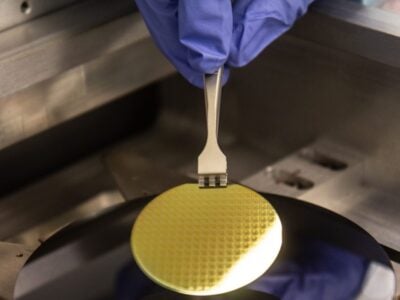
Power Trends: Analog Devices powers ahead
The recent deal that sees Analog Devices (ADI) buying Linear Technology (LTC) for $14.8bn highlights some of the key trends in the industry, says Peter Real, chief technology officer and senior vice president at Analog Devices. This is opening up opportunities in software defined power and energy harvesting for the $30bn combined company.
“The way I would frame it is from the customer base and the end market – we are seeing this more and more with the technology we have that customers want is domain expertise and technology expertise but also understand what that customer is trying to do at a higher level with a more sophisticated supplier base,” he said. “The requirements of the partnership with suppliers is evolving. A few years ago signal conditioning was different from signal processing from signal acquisition but now you need a broader suite of capabilities.”
The market of technology has driven Analog into the power management space.
“As you advance geometries you need very effective power management solutions,” he said. “As we follow clock speeds forward over the next few years, being more complete in the signal chain or the associated power solutions is going to define the more compelling supplier base. What was elemental and discrete several years ago is congregating and aggregating so you need a greater suite of technologies.”

acquisition of Linear Technology
Digital power management
He argues that much of the design of today’s analogue components is actually digital anyway. “From our own portfolio, let’s say you pick a data converter design that needs analogue and mixed signal, when you look under the hood you might be amazed by the amount of signal processing that goes on, be it correction loops, calibration or minimising transistor mismatch effects, there a lot of processing that goes on that the customer doesn’t need to know about.”
“We have processors to do the calibration, so I think there is a systemic underestimation in the amount of software firmware and algorithmic capability that exists in a company such as ours and that is a journey we have been on for some time.”
Software defined power is something is very definitely on the radar, bringing together the power devices from Linear and the software from ADI from its experience in software defined radio for cellular basestations.
“I would defer from answering on this at the moment as LTC is still LTC until the deal closes and we have to operate as separate companies,” said Real. “But we have seen the trends and produced technologies that are software defined, radio for example, so the trend we talk about is one we are already to responding to. All those capabilities are there and we have responded to it.”
The deal also provides ADI with the Dust Networks low power mesh wireless technology for evolving applications in the Internet of Things.
“In IoT you have to go into particular domains and applications spaces – vital signs monitoring, smart cities, and so on and so forth,” he said. “When you come down to a lower level, we are connected with all those evolving market spaces as many are evolutions of our industrial, healthcare and communications business and we are absolutely tracking those markets and to the extent that they are forming and reforming, we are absolutely connected.”
“When you think of solutions going forwards, there’s sensing, converting, conditioning and communicating, so communications is a key link,” he said. “We have many different frequency levels and levels of integration of RF and microwave through the acquisition of Hittite so we are very comfortable on how connectivity fits in the markets.”
“For example, ten years we were in the modem chipset business and we sold that to MediaTek because we just couldn’t scale [the business] appropriately but we didn’t give up on RF – we targeted infrastructure instead.”
“There’s a play going forward for communications technology on how to make that come together with the rest of the signal chain and I’m quite comfortable we can manage forwards on that. We have sub GHz ISM and 2.4GHz so we understand those domains and applications.”
Support for all kinds of energy harvesting technology is also a strong technology that Linear brings to the ADI product line.
“It is clear that multiple modality harvesting is an important rend, RF, vibration, thermoelectric, whether or how they will all be combined, it’s an important trend to respond to and we are well aware of that,” he said.
 If you enjoyed this article, you will like the following ones: don't miss them by subscribing to :
eeNews on Google News
If you enjoyed this article, you will like the following ones: don't miss them by subscribing to :
eeNews on Google News




